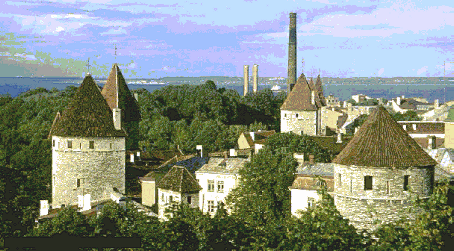

 Tallinn (German Reval) is a capital of Estonia, located on a bay of the
Gulf of Finland, is an important Baltic seaport with a large fishing industry
and a naval station. Manufactures include machinery, electrical equipment,
ships, textiles, furniture, and canned fish. The city consists of three
sections: an upper town on a steep hill topped by a citadel (13th-14th
century), a lower walled town built during medieval times (14th-16th century),
and a new district. Tallinn is the home of the Estonian Academy of Sciences
and a polytechnic college and has several theaters, a symphony orchestra,
and an opera company.
Tallinn (German Reval) is a capital of Estonia, located on a bay of the
Gulf of Finland, is an important Baltic seaport with a large fishing industry
and a naval station. Manufactures include machinery, electrical equipment,
ships, textiles, furniture, and canned fish. The city consists of three
sections: an upper town on a steep hill topped by a citadel (13th-14th
century), a lower walled town built during medieval times (14th-16th century),
and a new district. Tallinn is the home of the Estonian Academy of Sciences
and a polytechnic college and has several theaters, a symphony orchestra,
and an opera company.
The first mention of a settlement on the site of Tallinn dates from
1154. In 1219 Waldemar II of Denmark established a fortress on the site.
The town joined the Hanseatic League in 1285 and soon attained considerable
commercial importance. In 1346 Tallinn was sold by Denmark to the Teutonic
Knights. It was acquired by Sweden in 1561 and was annexed by Russia in
1710. The city then became a naval base for the Russian Baltic fleet. Tallinn
was the capital of independent Estonia from 1919 to 1940, when the republic
was annexed by the Union of Soviet Socialist Republics (USSR). The city
was occupied by German forces in 1941. Retaken by the USSR in 1944, the
city then served as the capital of the Estonian Soviet Socialist Republic
until 1991, when Estonia again became an independent republic. Population
497,766 (1991 estimate).


